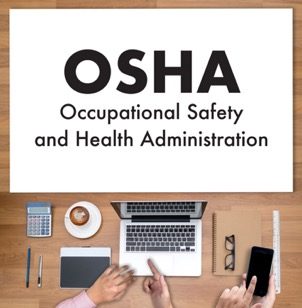
The Occupational Safety and Health Administration (OSHA) is a segment of the United States Department of Labor dedicated to the regulation of health and safety standards that help to prevent injury and illness. OSHA requires employers to comply with guidelines specific to their profession and workplace.
There are hundreds of standards, and a comprehensive overview of regulations for all industries will aid in more particular circumstances. Overall, higher risk industries such as construction and medical practices have more stringent requirements. However, as a rule, all companies are governed by the General Duty Clause — “Provide a place of employment that is free from recognized hazards that are causing, or are likely to cause, death or serious physical harm to employees.”
For many small and medium-sized businesses, the General Duty Clause pertains to a few key areas. Here is a list of these common compliance requirements, and how to best abide by them.
Prevent Falling Injuries
The majority of workplace injuries involve an employee falling, often due to unseen clutter or a slippery floor. Ensure that all high-traffic areas are free of unnecessary obstructions and take measures to mitigate office spills and weather-related water and debris making its way inside. Consider stocking a janitorial room with mops, cleaning supplies, and “wet floor” signage, in case of accidents. When rain or snow have fallen, floor mats should be placed near entryways to keep water from pooling on floors and creating a potential hazard.
Keep First Aid Supplies and Medical Services Nearby
OSHA regulations require workplaces to have first aid supplies and medical services available should an injury occur. While first aid kits should be fully stocked and easily accessible within the office, the medical care requirement may be fulfilled by having a clinic or hospital within a reasonable distance. If professional medical services are not available nearby, at least one employee must be trained in first aid.
Establish an Emergency Action Plan
In the unlikely event that an emergency occurs and employees are forced to evacuate, an emergency action plan is paramount. For offices with more than 10 employees, OSHA requires that employers provide a document indicating safety and evacuation procedures in the event of a hazardous situation, such as a fire or gas leak. This document must be kept in the workplace, and distributed to employees should they ask.
Keep the Workplace Clean
Illnesses are more likely to spread in unsanitary conditions. In order to prevent the circulation of germs, OSHA regulations dictate that the workplace must be kept as clean as possible. This includes all areas within the office, such as floors, breakroom counters, and bathrooms. To be safe, make sure that you have a solid stock of cleaning supplies, from mops and vacuums to disinfectant and paper towels.
OSHA regulations are meant to keep the office safe, and prevent employees from getting injured or sick. Ensuring that your office remains compliant with the appropriate standards is a means of investing in your employees (and avoiding a potentially lofty fine). Fortunately, EON provides safety supplies that will keep you OSHA compliant. Contact us today to learn about our products and services.



